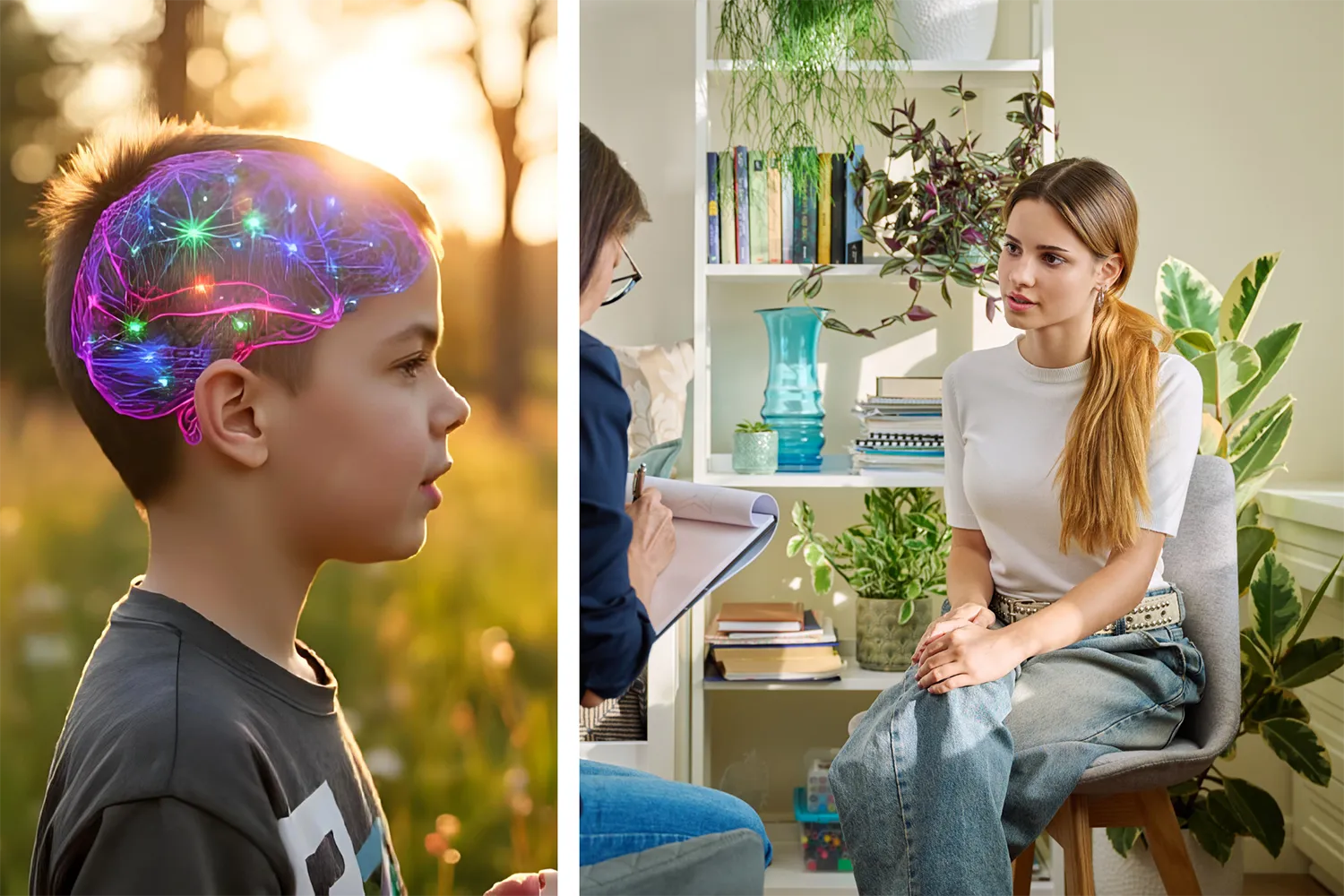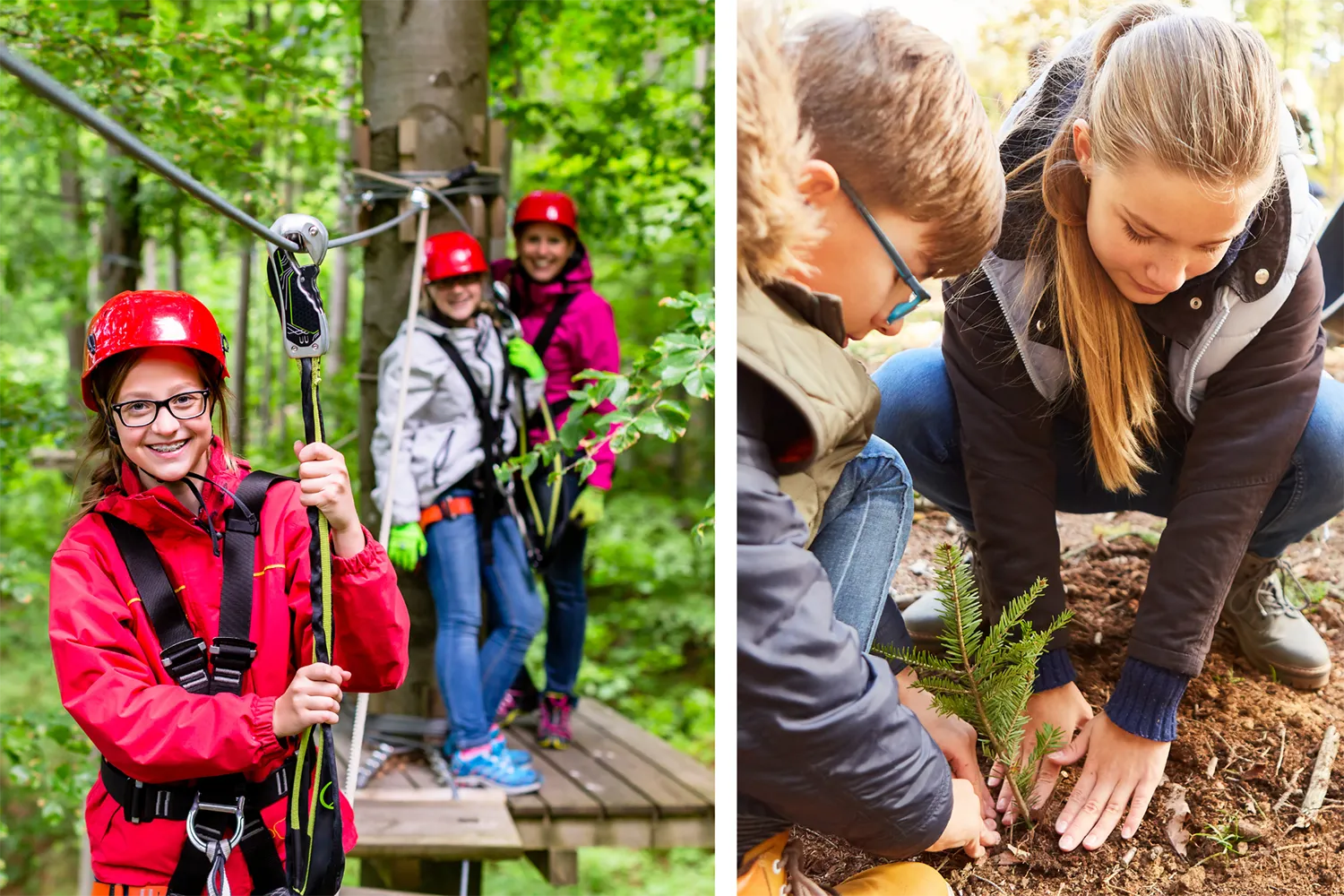In an era marked by rising youth mental health concerns, parents, educators, policymakers, and healthcare providers are seeking effective, holistic solutions. The CDC’s Youth Risk Behavior Survey revealed that the percentage of high school students who reported persistent feelings of sadness or hopelessness increased from 30% in 2013 to 42% in 2021. In fact, according to the National Institute of Mental Health, half of all adolescents (49.5%) were estimated to have had a mental disorder in 2022.

While the statistics on adolescent anxiety and depression are sobering, a powerful remedy lies within our natural world. From expansive green spaces to the quiet presence of indoor plants, exposing adolescents to nature significantly aids in development and contributes to overall health.
The study of nature’s positive impacts on humans is rooted in biophilia. Biophilia is the innate human tendency to connect with other forms of life and nature. This evolutionary bond means that access to and interaction with natural environments is a fundamental need for healthy human development, particularly during the critical period of adolescence.
How nature supports adolescent health
The benefits of nature exposure for young people are multifaceted. In this article, however, we’ll focus on just three ways nature impacts teen development: cognitive, emotional, and social development. Let’s take a closer look at each of these.

1. Nature aids in emotional regulation for adolescents: less stress and more joy
Remember, the adolescent brain is still under construction. Research confirms that the prefrontal cortex—responsible for decision-making, impulse control, and emotional regulation—continues developing into the mid-20s. In environments that feel chaotic, cold, or institutional, young people often experience heightened stress responses. Spaces that reflect nature have the opposite effect.
Natural environments offer a unique sense of calm, significantly lowering levels of stress and anxiety. Research shows that exposure to nature can reduce high cortisol levels. Even viewing natural scenes can lead to fewer mistakes on attention-demanding tasks, suggesting a restorative effect that lessens mental fatigue.
For example, a study cited by the University of Minnesota asked adolescents to briefly spend time in two different settings: a lakeside park and a busy urban center. After just a few minutes in each environment, their anxiety levels were measured using a validated scale. The results showed a 9% drop in anxiousness after viewing the natural scene and a 13% increase after standing in the city setting—even after controlling for factors like age, gender, background, and mental health status.

Regular interaction with nature is also linked to increased feelings of happiness, wonder, and reflection. These feelings support emotional stability and reduce the risk of overwhelm. Peaceful, nature-filled spaces help teens reset, reconnect, and self-regulate—key skills during emotionally charged years. (Adolescents’ experiences in nature: Sources of everyday well-being).
Create a Restorative Environment for Teens
The science is clear: natural elements have a powerful calming effect on the adolescent brain. You can actively reduce stress and support emotional regulation by incorporating living plants into your school, clinic, or youth center.
2. Nature impacts teen cognitive development: focus, creative problem-solving, and brain health
Nature acts as a restorative environment for the brain. Studies show that spending time in nature can enhance concentration, improve working memory, and boost cognitive flexibility. Children and adolescents in greener environments demonstrate better attentional functioning and often perform better on cognitive tasks (learn more about nature’s impact on kids).
Unstructured exploration in natural settings stimulates the senses and encourages imaginative thinking. Activities like navigating trails or building with natural elements foster critical thinking and problem-solving skills.
3. Nature incites social and personal growth: cooperation, resilience, and identity
Outdoor activities often require teamwork and cooperation, creating opportunities for adolescents to build social skills and strengthen friendships, fostering a vital sense of community. When immersing teens in natural, outdoor environments isn’t possible, bringing nature inside inspires similar results. Examples include caring for plants, working with animals, and building micro-environments that support nature (plant containers, aquariums, rock gardens, etc). One of nature’s gifts is its impartiality and non-controversial quality, which contributes to ideal conditions for positive social engagement and building confidence.
Because adolescence is a life stage of identity formation, teens are learning what they like and how they want to be seen. Plant design that invites choice and participation can be a meaningful tool in teen development. When teens choose greenery that reflects their personality or aesthetic taste, it becomes a form of self-expression. In schools or youth programs, this might look like choosing plant containers, caring for desk plants, or tending to a self-made garden. These small acts support independence, emotional regulation, and a stronger sense of self.

The role of indoor plants when teens can’t be outside
In Arizona, extreme heat, limited green space, or indoor-only programs often limit outdoor exposure. But indoor plants offer an accessible, impactful alternative. When full outdoor access isn’t feasible, bringing nature indoors offers a remarkable alternative. The scientific community is increasingly recognizing that even the subtle presence of plants within indoor environments contributes to mental well-being. Indoor plants make nature accessible in urban settings, homes, schools, and healthcare facilities.
When it comes to education facilities, classrooms and study areas with plants have been shown to positively impact students’ attention and concentration. Even the aesthetic appeal of lush, green plants can subtly improve mood and reduce negative feelings. Neurologically speaking, the calm restored by green environments allows for optimal engagement of the brain’s learning centers.

Plant Solutions specializes in bringing nature indoors by partnering with business owners, designers, and property managers to create plant displays tailored to the needs of their space. These green installations — plant walls, custom planters, living and artificial hanging plants, succulent gardens, and MossWallArt™ — are designed to support the well-being of everyone who uses the space, including teens. If you’re looking to bring nature inside your school, medical facility, youth counseling offices, or recreational center, reach out.
Practical ways Arizona leaders can help teens access nature
Here are actionable strategies for parents, educators, healthcare professionals, and program directors working with adolescents in schools, clinics, or residential settings.
1. Incorporate greenery into everyday spaces
- Add potted plants to classrooms, hallways, and shared spaces in schools, clinics, and after-school programs.
- Create indoor displays that support sensory variation and teach students about plant care and propagation.
- Use houseplants to help teens develop responsibility and emotional grounding through routine care.
2. Go outside
- Prioritize regular time in nature: walking, biking, hiking, or simply sitting in local parks, gardens, or shaded outdoor seating.
- Invest in green schoolyards, shaded courtyards, or desert-acclimated community gardens that double as learning spaces.
- Visit animal sanctuaries, botanical gardens, and events organized by the staff of natural preserves. Arizona residents can explore Liberty Wildlife and the Desert Botanical Garden in Phoenix.

3. Make use of nature-based programs
- Partner with safe, trauma-informed wilderness or outdoor therapy programs for teens.
- Invite guest educators from wildlife rescues or environmental groups to speak in schools, shelters, nursing homes, and other community settings.
4. Design with biophilic intent
- Incorporate atriums, natural light, and water features wherever possible.
- Use biophilic design principles in remodels or new buildings to improve mental health outcomes through nature-based elements.
- Optimize views of nature from classrooms, bedrooms, or therapy spaces. Even a single tree outside a window can make a difference.
- Create a wellness room dedicated to restoration and ensure natural elements abound. Examples include indoor plants, sounds of running water, wood furniture, and the presence of stones.
By consciously fostering connections with the natural world, both outdoors and indoors, we can provide adolescents with invaluable tools to navigate the complexities of their development, build resilience, and cultivate lasting mental and emotional well-being.
Cultivate a space that helps teens thrive.
Reach out to the experts at Plant Solutions to design your custom indoor plant installation today.
